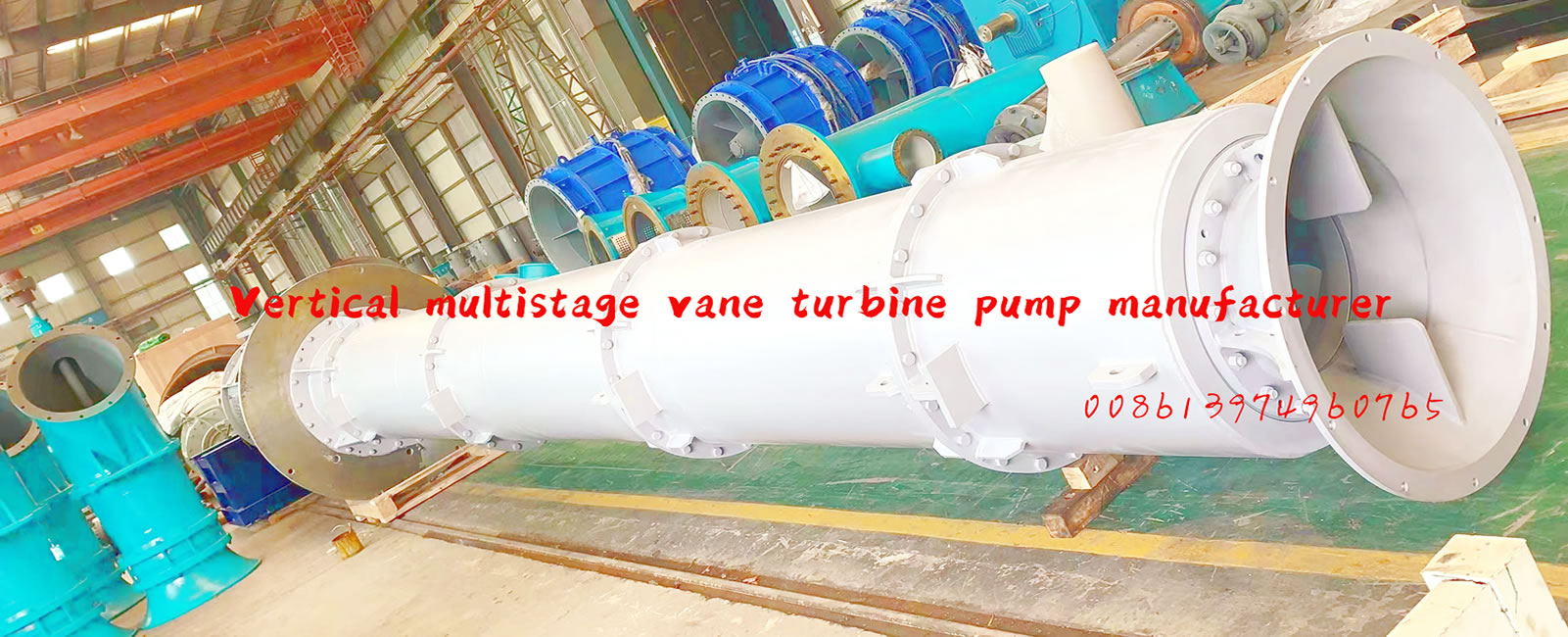KnowledgeECONOMICS
CONTACT US
Hunan Perfect Industry Co.,Ltd
Contact: Manager Hu, Manager Yi
Hotline:008618507312158
Cell phone:008613974960765
Address:Xiangyin County Industrial Park, Yueyang City, Hunan Province, China
Current location: HOME »Knowledge »vertical turbine pump
Investigate the common damage modes of the import bearing of Vertical turbine pump, hoping to draw attention to it. Maintenance and maintenance should be done more often in peacetime to prolong the service life of the bearing.
Mechanical Damage of Vertical turbine pump
In severe cases, metal peeling and large area scratches occur on the contact surface; in general, mechanical damage of imported bearings refers to different levels of grooves on the alloy surface of bearing bushes. The main reason for the mechanical damage of the bearing is that it is difficult to form oil film on the surface of the imported bearing or the oil film is seriously damaged.
Cavitation of Bearing of Vertical turbine pump
Plastic deformation and cold work hardening occur on the outer layer. Under the repeated action of cylinder pressure impact load, sliding inlet bearing of long shaft pump loses its deformation ability, gradually forms lines and expands. Then, with the debris falling off, holes are formed on the outer layer under load. In general, when the bearing bush is cavitated, the pit first appears, and then the pit gradually expands and causes the interface crack of the alloy layer. The crack propagates along the parallel direction of the interface until it flakes off. The main reason for the cavitation of sliding bearing is that the sudden change of cross section of structural elements such as oil grooves and oil holes results in a strong disturbance of oil flow, and bubbles are formed in the vacuum area where the oil flow is disturbed, then cavitation occurs due to the increase of pressure and the collapse of bubbles. Cavitation usually occurs in the high load area of the imported bearing, such as the lower bearing bush of the crankshaft main imported bearing.
Fatigue Pitting Corrosion of Vertical turbine pump
Because of engine overload, fatigue pitting corrosion of the inlet bearing of long shaft pump refers to overheating of the bearing and excessive clearance of the inlet bearing, which results in fatigue damage, fatigue pitting corrosion or fatigue shedding in the middle of the bearing. This kind of damage is mostly caused by overload, excessive clearance of F bearing, unclean lubricating oil and foreign body mixed in the interior. Therefore, when using, we should pay attention to prevent the imported bearing overload from running at too low or too high speed; adjust the engine to a stable state when idling; ensure the normal inlet bearing clearance to prevent the engine from too high or too low speed; check and adjust the working condition of the cooling system to ensure the engine working temperature is appropriate. Appropriate.

Investigate the common damage modes of the import bearing of vertical long shaft pump, hoping to draw attention to it. Maintenance and maintenance should be done more often in peacetime to prolong the service life of the bearing.
Mechanical Damage of Vertical turbine pump
In severe cases, metal peeling and large area scratches occur on the contact surface; in general, mechanical damage of imported bearings refers to different levels of grooves on the alloy surface of bearing bushes. The main reason for the mechanical damage of the bearing is that it is difficult to form oil film on the surface of the imported bearing or the oil film is seriously damaged.
Cavitation of Bearing of Vertical turbine pump
Plastic deformation and cold work hardening occur on the outer layer. Under the repeated action of cylinder pressure impact load, sliding inlet bearing of long shaft pump loses its deformation ability, gradually forms lines and expands. Then, with the debris falling off, holes are formed on the outer layer under load. In general, when the bearing bush is cavitated, the pit first appears, and then the pit gradually expands and causes the interface crack of the alloy layer. The crack propagates along the parallel direction of the interface until it flakes off. The main reason for the cavitation of sliding bearing is that the sudden change of cross section of structural elements such as oil grooves and oil holes results in a strong disturbance of oil flow, and bubbles are formed in the vacuum area where the oil flow is disturbed, then cavitation occurs due to the increase of pressure and the collapse of bubbles. Cavitation usually occurs in the high load area of the imported bearing, such as the lower bearing bush of the crankshaft main imported bearing.
Fatigue Pitting Corrosion of Vertical turbine pump
Because of engine overload, fatigue pitting corrosion of the inlet bearing of Vertical turbine pump refers to overheating of the bearing and excessive clearance of the inlet bearing, which results in fatigue damage, fatigue pitting corrosion or fatigue shedding in the middle of the bearing. This kind of damage is mostly caused by overload, excessive clearance of F bearing, unclean lubricating oil and foreign body mixed in the interior. Therefore, when using, we should pay attention to prevent the imported bearing overload from running at too low or too high speed; adjust the engine to a stable state when idling; ensure the normal inlet bearing clearance to prevent the engine from too high or too low speed; check and adjust the working condition of the cooling system to ensure the engine working temperature is appropriate. Appropriate.

























